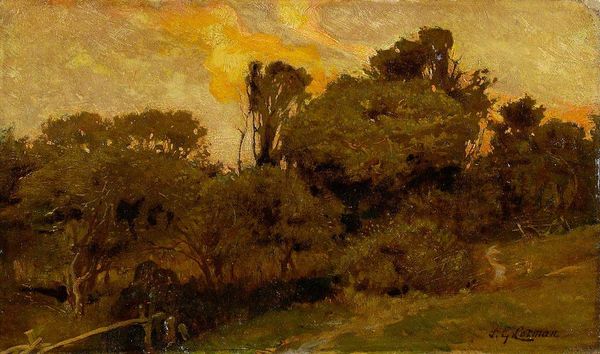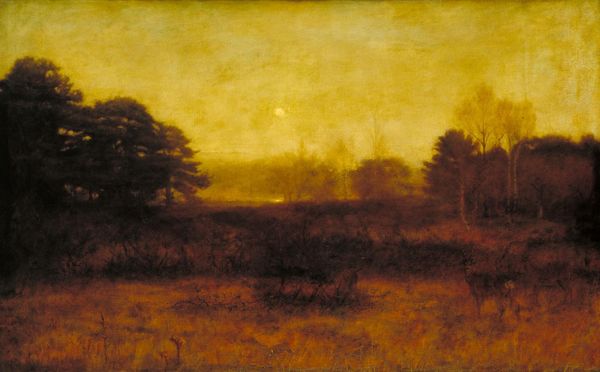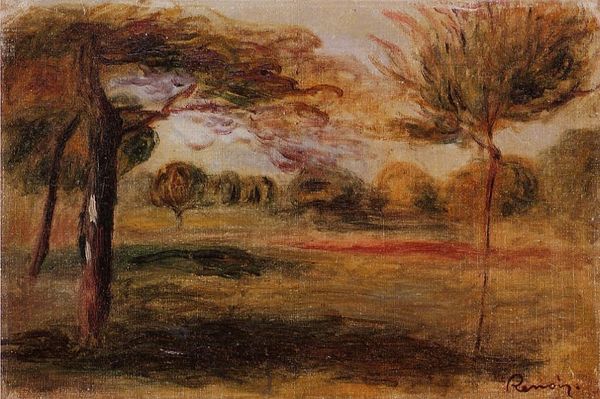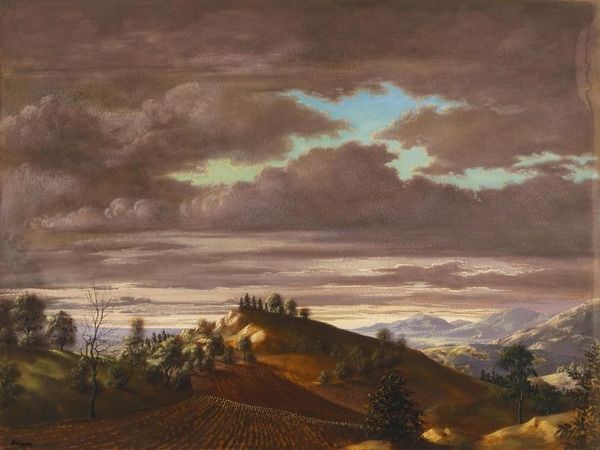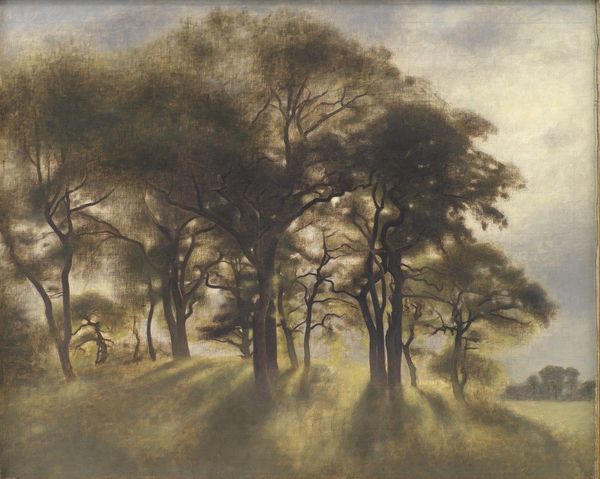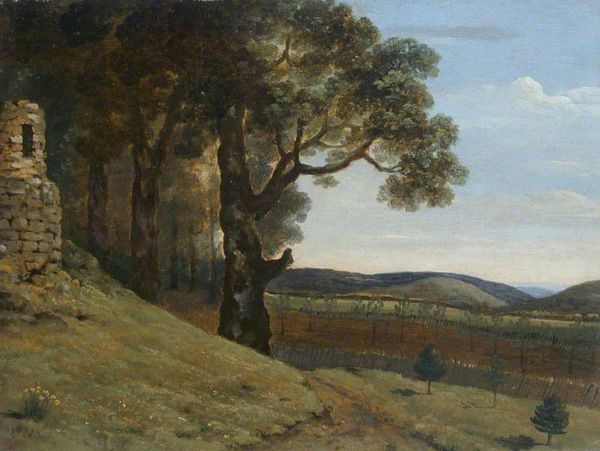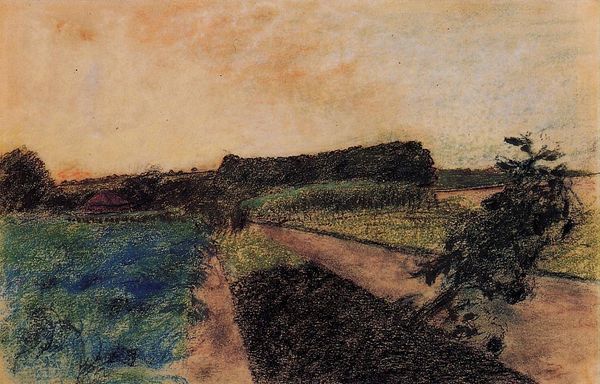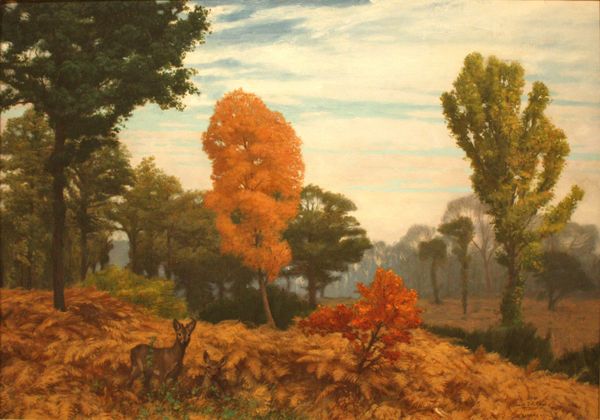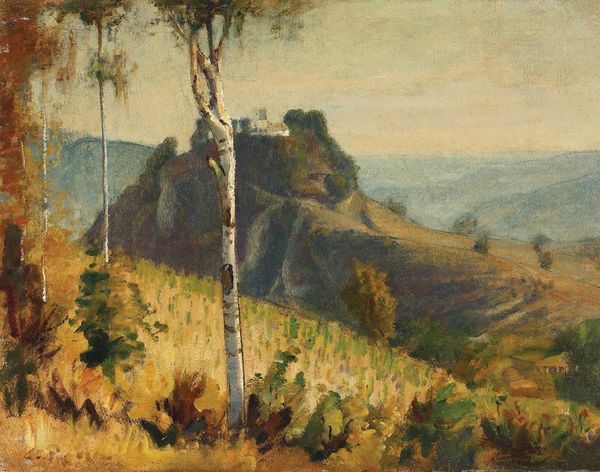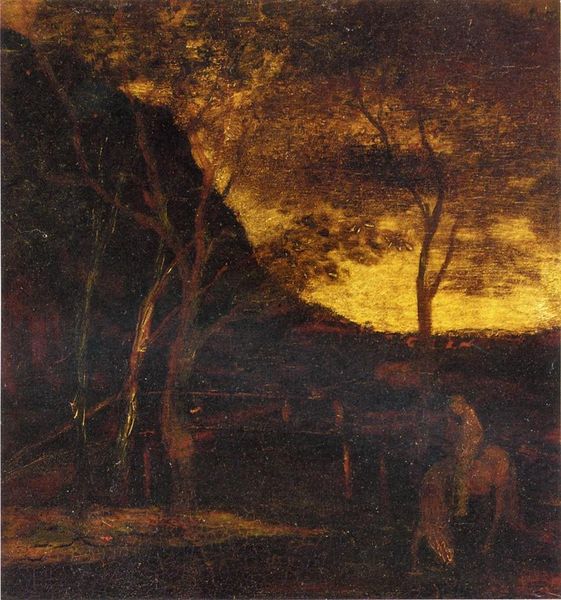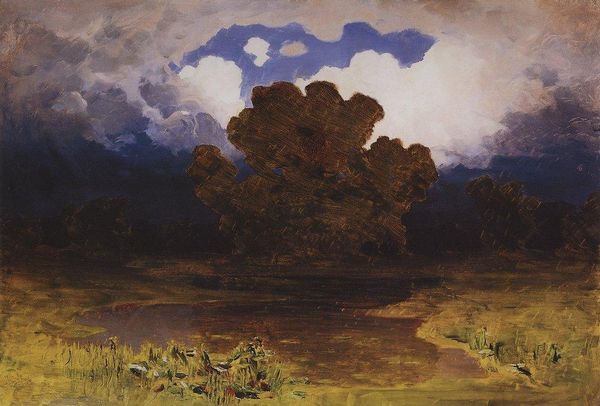
Copyright: Public domain
Curator: This is Henry Herbert La Thangue's "A Ligurian Valley, Italy," painted around 1910. He worked en plein air, capturing the landscape firsthand. Editor: Immediately, I’m struck by the painting’s stillness. There’s an almost suffocating quality to the heavily applied oil paint and muted greens. Curator: Notice the compositional structure. The artist utilizes a central tree motif that elegantly bifurcates the landscape. Its slender trunk offers a subtle vertical thrust against the more amorphous background. Editor: And what strikes me as fascinating about that solitary tree is how its material presence almost seems at odds with the Impressionistic brushstrokes. It's a tactile element rendered with almost scientific precision, grounded by its placement within a broader scene depicting Italy in thick impasto application. Were these landscapes destined for the urban consumer, an exercise to provide an idea of the countryside and the healthy resources that it offered? Curator: Precisely. It echoes elements of Romanticism with that lone, almost defiant tree, silhouetted against the muted sunset. Note the subtle shifts in tonal values to give form to what could seem a uniform mass of green hills and vegetation. The golden-yellow sky emphasizes the drama. Editor: La Thangue's working process, his plein-air practice, also demands examination. How much preparation, if any, went into these paintings before they were executed outside in the Ligurian sun? The build-up of the material across the work indicates prolonged labor to seize and represent the view, calling to question both the idea of the immediate Impression and the representation of the common subject. Curator: Indeed, you see La Thangue engaging in that interesting negotiation between observing transient effects of light while simultaneously needing to formalize structure within his composition. This combination results in a painting both expressive and tightly organized. Editor: Understanding La Thangue's methodology, with its tensions between on-site rendering and market-intended subject matter, gives depth to what at first appeared a standard landscape. Curator: Seeing the artwork through both aesthetic form and production contexts definitely elevates my understanding of it. Editor: Absolutely, a blend of formal rigor and material awareness.
Comments
No comments
Be the first to comment and join the conversation on the ultimate creative platform.
